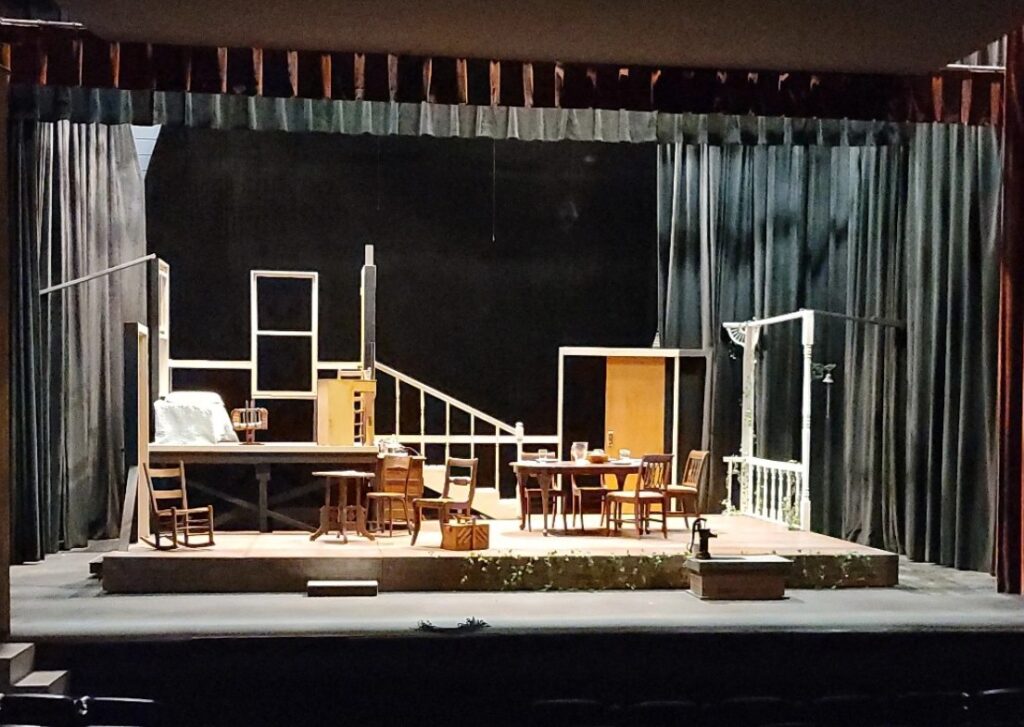A stage setting is not a background; it’s an environment. __Robert Edmond Jones
For actors, a set is like a new world. A place to step into and truly exist as their character. For audiences, sets give them a peek into the universe in which the story takes place.
The Miracle Worker takes place in four different locations: The Keller home, the Perkins Institution for the Blind, a train station, and The Keller’s garden house. Creating a space for all these different settings can present a unique challenge for the director and set designers.
I sat down with the director of The Miracle Worker, Nancy Eppert, to discuss her inspiration and vision for the play’s set design.
LIZZIE: How would you describe the concept of this set design?
NANCY: I have witnessed several productions of The Miracle Worker by William Gibson and I wanted to hold true to the author’s intentions and give the story the best underpinning possible. Therefore, I have taken my cues from the description in the forward of the script,
The convention of the staging is one of cutting through time and place, and its essential qualities are fluidity and spatial counterpoint. To this end, the less set there is the better. The stage should therefore be free, airy, episodic, unencumbered by walls. Apart from certain practical items such as the pump, a window to climb out of, doors to be locked—locales should be only skeletal suggestions, and movement from one to another should be accomplishable by little more than the lights.
LIZZIE: Where did you draw your inspiration from?
NANCY: One of the productions mentioned above was presented during the AACT Worldfest in Venice Florida. several years ago. It was a production by a theatre company from Russia. The stunning simplicity, monochromatic costuming, and skeletal set helped to create a highly emotional interaction between actors and audience, the storytelling was superb. The emotion behind the words (in Russian) and interactions of the actors was at the forefront and impactful.
LIZZIE: What aspect of the set excites you the most?
NANCY: The actors literally must image their surroundings, creating each particle of the stage through their individual thoughts. The absence of walls is freeing and opens them to all sorts of decision-making for each scene. I love working with actors that take risks and move beyond the literal. As the audience witnesses the bare essence of the construction, they too become engaged in that experience. And quite frankly, having the pump actually pumping water on stage is very exciting to me!
LIZZIE: What challenges have you faced with the design and construction of this set?
NANCY: The Powerhouse Theatre does not have a fly house nor an open trussed substructure, therefore using those areas to support suspended items are nonexistent. The builders had to create support elements to accomplish this task and keep many construction and support aspects present before the audience. The theatre is not spacious; however, it is sufficient. The harmony of lumber, light and sound create the “miracle” of The Miracle Worker.
Set designs have the power to transport us to places we’ve never been, to take us back to the days of the past. Travel back with us to 1880’s Tuscumbia, Alabama, April 1-3 and April 8-10. Tickets for The Miracle Worker are available here.
A big thank you to Nancy Eppert and the technical crew of The Miracle Worker for all their hard work!




0 comments on “Setting the Stage: A Glimpse Into the Set Design for The Miracle Worker”